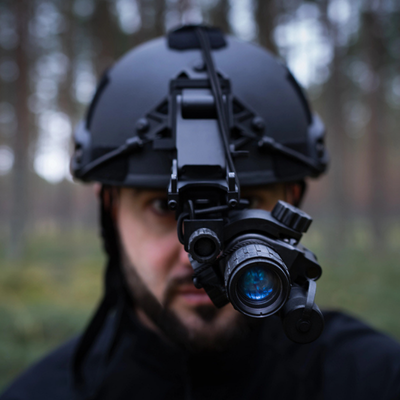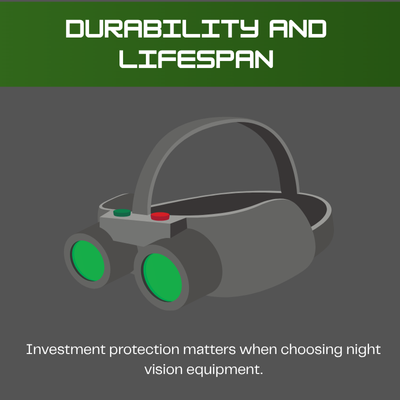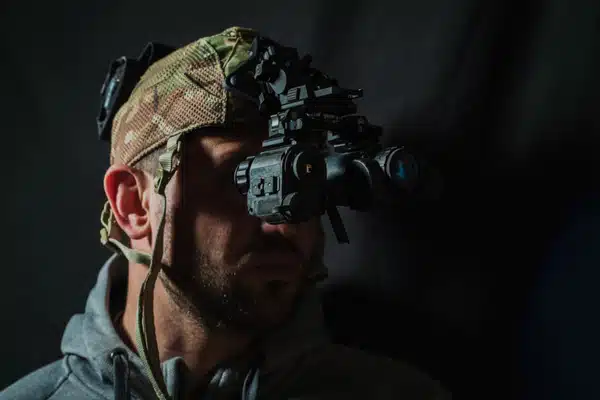Night vision technology has transformed how we see in darkness: image intensification, image intensifier tubes. When choosing between Gen 2 and Gen 3 night vision devices, night vision goggles, understanding their core differences and light pollution helps you make the right decision.
Both generations offer solid performance, but Gen 3 delivers superior image quality, advancements, image distortion, and capabilities. Gen 2 provides excellent value for most users, hunting, while Gen 3 represents the gold standard for military and professional applications.
How Night Vision Generations Work
Night vision devices use image intensifier tubes to amplify available light. These tubes define the generations of night vision technology.
Gen 1 devices from the 1960s offered basic night vision but had major limitations. They needed infrared illumination and produced poor image quality.
Gen 2 arrived in the 1970s with the microchannel plate breakthrough. This allowed much brighter images and passive operation without an IR illuminator in most conditions.
Gen 3 emerged in the late 1980s using gallium arsenide photocathodes. This advanced material dramatically improved light sensitivity and resolution compared to earlier generations.
Modern advancements include white phosphor technology and autogating features that enhance performance even further.
Key Technology Differences

The gap between Gen 2 and Gen 3 comes down to tube construction and materials.
Photocathode Materials
Gen 2 uses multialkali S-25 photocathodes. These work well but have limited spectral response, typical of entry-level night vision devices like a night vision monocular in older night vision technology.
Gen 3 features gallium arsenide photocathodes that see light far better, giving stronger amplification even under light pollution, ideal for high-end night vision binoculars.
Microchannel Plate Design
Both generations use microchannel plates to multiply electrons and boost brightness. Gen 3 added ion barriers that protect the photocathode from damage over time.
This increases tube life significantly. Gen 2 night vision devices typically last 5,000 hours while Gen 3 units often exceed 10,000 hours.
Autogating Features
Most Gen 3 devices include autogating technology. This rapidly adjusts power to handle sudden brightness changes without image distortion.
When bright lights appear, autogating instantly reduces gain to prevent blooming effects. It then quickly boosts sensitivity back up in darkness.
Gen 2 devices usually lack this feature or have slower brightness controls.
Phosphor Screen Options
Traditional night vision produces green images. Modern white phosphor technology creates grayscale images with better contrast and image sharpness.
White phosphor options are more common in Gen 3 devices, though some Gen 2 units offer this upgrade.
Performance in Low Light

Light sensitivity separates these generations most clearly.
Gen 2 night vision technology amplifies light roughly 20,000 times. This allows target detection to about 200 yards in dark conditions without needing an IR illuminator.
Gen 3 pushes light amplification to 30,000-50,000 times or more. The superior photocathode material creates brighter, cleaner images from the same amount of available light.
In practical terms, Gen 3 works effectively in conditions where Gen 2 struggles. Users can see clearly at 300+ yards even under starlight-only conditions.
This makes Gen 3 the preferred choice for military operations in extreme darkness. The enhanced capabilities provide critical advantages when every detail matters.
Handling Bright Light Sources
Real-world environments mix dark and bright areas. How devices handle this variation affects usability.
Gen 2 devices use automatic brightness control to prevent damage from sudden light. However, response can be slow and users may see large halos around bright sources.
Gen 3 autogating responds instantly to light changes. When headlights or muzzle flashes appear, the system dampens brightness immediately while maintaining image clarity.
This prevents temporary blindness and maintains situational awareness. The technology works continuously to balance image brightness across varying light pollution levels.
For aviation and law enforcement applications, this responsiveness is essential for safety and effectiveness.
Image Resolution and Clarity
Resolution determines how much detail you can see through night vision devices.
Gen 2 typically offers 45-54 line pairs per millimeter resolution. This provides decent clarity for most applications.
Gen 3 delivers 64+ line pairs per millimeter, with high-end units reaching 72 or more. This translates to noticeably sharper images with finer detail visibility.
The improved resolution quality becomes most apparent when identifying distant objects or reading text. Gen 3 also maintains better signal-to-noise ratios, reducing graininess in very dark conditions.
Both generations provide full field coverage without the edge distortion that plagued earlier technology.
Durability and Lifespan

Investment protection matters when choosing night vision equipment.
Gen 2 devices offer reliable service with tube life around 2,500-5,000 hours. For occasional use, this represents many years of operation.
Gen 3 construction emphasizes durability with 7,500-10,000+ hour lifespans. The ion barriers significantly reduce photocathode wear over time.
Military-grade Gen 3 units also meet higher ruggedization standards. They withstand greater physical stress, temperature extremes, and recoil forces than typical Gen 2 devices.
This makes Gen 3 more suitable for intensive professional use where equipment failure isn’t acceptable.
Applications and Use Cases
Different users have varying performance requirements.
Military and Special Forces
Gen 3 is standard for military night vision goggles. Superior performance in extreme darkness and autogating capabilities justify the higher price for combat applications.
Special operations forces rely on Gen 3 for covert missions where maximum light sensitivity is critical.
Law Enforcement
Police tactical teams often use Gen 3 for surveillance and operations requiring exceptional clarity. Standard patrol units may use Gen 2 for routine tasks at lower cost.
The automatic gain control in Gen 3 helps officers transition between indoor and outdoor environments safely.
Civilian Applications
Gen 2 serves most civilian needs effectively. Hunting, wildlife observation, and property security work well with Gen 2 performance levels.
Serious enthusiasts and professionals may choose Gen 3 for the ultimate image quality, especially for challenging conditions.
Aviation Operations
Pilots require Gen 3 night vision goggles for safety. The autogating prevents dangerous brightness spikes from ground lights or lightning.
Gen 2 limitations make it unsuitable for aviation where depth perception and clarity are critical.
Cost Considerations

Price remains a major factor in the comparison between generations.
Gen 2 devices typically range from $500-3,000, making them accessible for hobbyists and smaller organizations.
Gen 3 units cost $3,000-10,000+ due to complex gallium arsenide photocathodes and advanced features. Military-spec tubes command premium prices.
While Gen 3 costs more upfront, longer tube life and superior durability can offset the investment over time for intensive users.
Budget-conscious buyers often start with quality Gen 2 devices and upgrade later when they understand their specific needs better.
Making Your Choice
The decision between Gen 2 and Gen 3 depends on your specific requirements and budget.
Choose Gen 3 if you need maximum performance in extreme low light, operate in environments with varying brightness, or require professional-grade reliability.
Gen 2 works well for recreational use, moderate low-light conditions, and applications where cost matters more than ultimate performance.
Consider that high-end Gen 2+ devices can approach Gen 3 performance in some conditions. Always check specifications like resolution, sensitivity, and autogating features when comparing specific models.
Both generations represent mature night vision technology that opens up the night world. Understanding these key differences helps you select the right tool for your applications.
Whether you choose Gen 2 or Gen 3, you’re investing in proven technology that extends your vision beyond normal human limitations. The right choice balances your performance needs with practical considerations like price and intended use.
Ready to upgrade your night vision capabilities? Contact our experts to discuss which generation best fits your specific requirements and budget.

